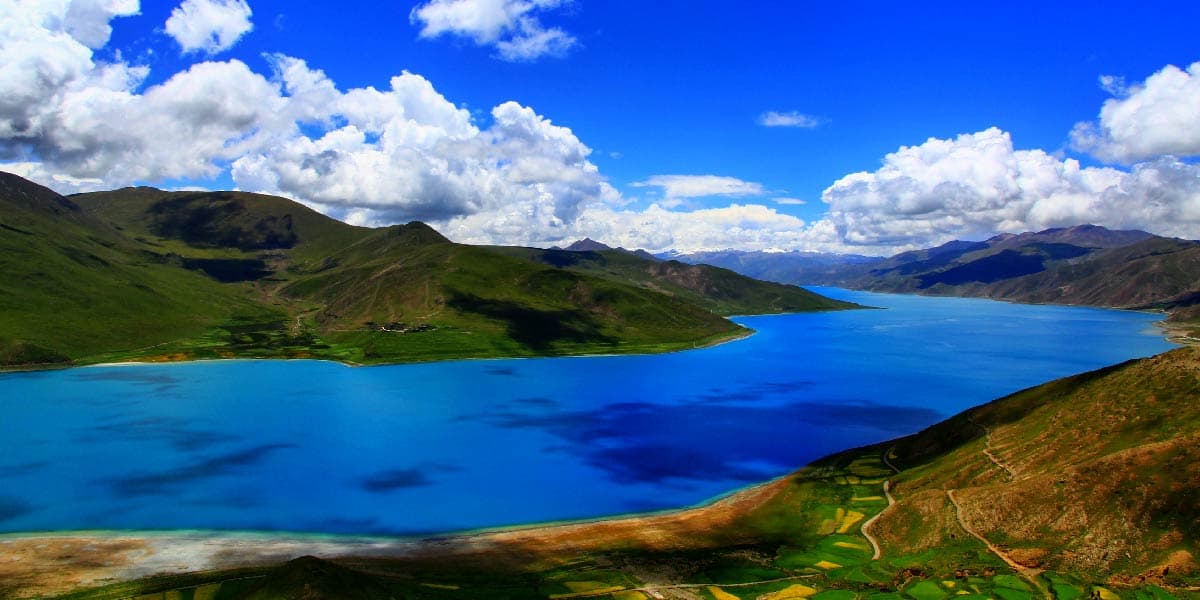Facts of Tibet Tour
Tibet, a historically significant region spanning a substantial part of the Tibetan Plateau in Central Asia, is celebrated as the "Roof of the World" and the "Third Pole" due to its remarkable elevation. Serving as the ancestral home for Tibetans and various other ethnic groups, including Monpa, Qiang, and Lhoba, it also accommodates sizable populations of Han Chinese and Hui individuals. With an average height of 4,900 meters (16,000 feet) above sea level, Tibet boasts an extraordinary landscape. The Tibetans possess a distinctive culture and religion, distinguishing them from global societies. At the same time, the region itself showcases China’s most captivating natural scenery, featuring expansive grasslands, serene lakes, and majestic mountains. Amidst a world filled with exceptional destinations, Tibet is a realm of immense grandeur, luring explorers with its mystique. Recognized as the "Land of Snow," this enigmatic land, the source of Asia's major rivers, is adorned with sacred lakes, solidifying its stature as the "Roof of the World."
Why is it called the Tibet Tour?
A Tibet Tour is a travel experience that involves visiting Tibet, a historically and culturally significant area on the Tibetan Plateau in Central Asia. Renowned for its stunning landscapes, rich culture, and unique Tibetan Buddhism, this term describes the journey to explore Tibet's natural beauty, historical sites, and monasteries and immerse oneself in its unique culture. Tibet's high-altitude landscapes, spiritual landmarks, and distinctive way of life have attracted global travelers, offering a chance to witness awe-inspiring mountains, serene lakes, and ancient temples and engage with local Tibetans. Recently, Tibet has become more accessible to tourists with Chinese government approval, though specific regulations like a Tibet Travel Permit and Chinese Visa apply. "Tibet Tour" represents the experience of discovering and valuing Tibet's wonders and cultural legacy.

Here are some key facts to know about the Tibet Tour:
- Foreign travel to Tibet used to be restricted. Tourists gained access to Tibet in the 1980s, attracting travelers interested in Buddhism and nature's purity. Prominent attractions include the Potala Palace, Jokhang Temple, Namtso Lake, Samye Monastery, and Mt. Everest. Some areas remain off-limits. Tibet, formerly independent before China annexed it in 1959, is now a significant province. Elevated at around 4,500 meters above sea level, Tibet is known as the Roof of the World. Solo travel isn't allowed; group travel, a Tibet Travel permit, and a Chinese visa are required.
- Tibet's isolation: Tibet is the least populated province in China due to its challenging terrain, and its mountain ranges act as barriers, leaving some areas uninhabited. The region's average mountain height of 22,960 feet earned it the "Roof of the World" nickname. Five mountains surpass 26,240 feet, including Everest. Frequent flights, the Qinghai-Tibet Railway, and highways have increased accessibility. Tibet is China's largest province yet least populated, primarily by traditional farmers or herders. The UNESCO World Heritage Site Potala Palace in Lhasa dates back to 637 and is nicknamed the "Palace of Art."
- Buddhism's Cultural Influence: In Tibet, Buddhism isn't merely a belief but a lifestyle seen across the region. Tibetans coexist with nature, as reflected in their vibrant land. The area hosts numerous sacred sites, including monasteries and palaces.
- Tibet's Water Resources: Tibet holds the world's third-largest water and ice store, supplying water to Asia through its rivers, glaciers, lakes, forests, and wetlands. Over a billion people rely on Tibet's freshwater from six of Asia's major rivers.
- "Sea of Dances and Songs": Tibetans embrace music and dance, often gathering around fires for nightly dances. Visitors can join in while enjoying local drinks like salted butter tea or Tibetan chang, an alcoholic beverage.
- Lake Yamdrok's Spiritual Significance: Pilgrims visit Lake Yamdrok for spiritual guidance due to its turquoise waters. The region features clear lakes, valleys, rivers, mountains, and forests.
- Lake Namtso's Heavenly Touch: Lake Namtso, China's second-largest saltwater lake, is renowned for its beauty. Legend ties it to God Indra's daughter, Indra, holding an aquarium and a mirror.
- Mount Kailash's Spiritual Convergence: Named 'Kangrinboqê,' Mount Kailash holds significance for Hindus, Jains, and Buddhists. Its distinctive shape and perpetual snow make it an enduring pilgrimage site.
- Lake Mansarovar's Sanctity: As the highest freshwater lake, Lake Mansarovar influences rivers like the Indus and Brahmaputra. A pilgrimage and bathing ritual hold profound importance.
- Basum Lake's Sacredness: Nyingma Tibetan Buddhists revere this extensive freshwater lake in eastern Tibet.
- Rakas Tal's Contrast: Located near sweet Lake Mansarovar, saltwater Rakas Tal forms legends of gods and the devil. One is clear and sweet, while the other is salty and unfit for consumption.
